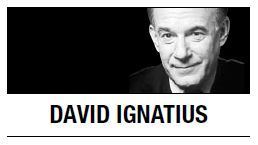
North Korea’s latest nuclear test triggered diplomatic aftershocks in Asia -- and a growing concern that the volatile regime in Pyongyang may pose the first big test for the next US president.
Friday’s test was the fifth and largest nuclear device North Korea has detonated, estimated at 10 kilotons, and it came defiantly on the 68th anniversary of the regime’s founding. It triggered a flurry of phone calls among the worried leaders of the United States, South Korea and Japan.
Analysts focused on an official statement by the Pyongyang’s Nuclear Weapons Institute that described the detonation as a “nuclear warhead explosion test” for a device “able to be mounted on strategic ballistic rockets.” The statement also claimed that North Korea’s “standardization” of this warhead design will allow production, “at will,” of “smaller, lighter and diversified nuclear warheads of higher strike power.”
North Korea has offered a chilling demonstration over the past month of its ability to deliver such warheads, using missiles that could strike Japan, South Korea and even US territory. The combined bomb and missile tests showed that Pyongyang is “coming closer and closer” to attack capabilities that would pose a “nightmare” for the United States and its allies, warned one Asian diplomat Friday.
Pyongyang’s most impressive missile test was a launch Monday in rapid succession of three intermediate-range missiles toward Japan. Each of the missiles traveled about 965 kilometers and fell inside the boundaries of Japan’s air-defense identification zone and exclusive economic zone. Monday’s multiple launches followed a test on Aug. 3 of a single missile that also landed within the Japanese zones.
North Korea showed its potential ability to strike the United States on Aug. 24, when it launched a missile from a submarine off its eastern coast. That missile traveled about 483 kilometers and landed within Japan’s air-defense zone.
For the United States and its Asian allies, the North Korean weapons tests are a stark warning that the regional threat level is rising, despite UN sanctions against North Korea. The seriousness of the threat was signaled by an unusual round of phone calls Friday.
President Obama spoke with Japanese Prime Minister Shinzo Abe just after midnight Friday, Washington time, near the end of his return trip from Asia. According to the Japanese account of the conversation, Abe told Obama that Japan viewed the North Korean test as a “grave threat” to its security and a flagrant violation of UN sanctions. In response to Pyongyang’s actions, “a strong message is needed through concrete measures,” Abe said.
According to the Japanese account of the call, Obama told Abe that he agreed with this assessment, and he described the US-Japan alliance as “rock solid” and America’s commitment to nuclear deterrence against threats to Japan as “unshakable.” Such sharp language is the diplomatic equivalent of a flashing red warning light.
Obama also spoke early Friday with South Korean President Park Geun-hye to share concern and commitment. And perhaps most interesting, given past strains between Tokyo and Seoul, Abe spoke directly with Park later Friday morning. The Japanese source said Park described North Korea’s nuclear test as a “serious provocation” and “outrageous” violation of international norms.
After these intense expressions of concern, the question is what the United States and its allies will do to deter a North Korean regime that, under Kim Jong-un, keeps upping the stakes in its nuclear brinkmanship. One key issue is whether China can be persuaded to play a stronger role in curbing its volatile neighbor, by tougher enforcement of the UN sanctions it has already endorsed and perhaps by enactment of new UN sanctions.
The North Korean threat is likely to expand into full-blown nuclear-weapons capability early in the term of the next president. Pentagon officials say that as they prepare the agenda of key military issues for the next president, North Korea is near the top of the list. Partly that’s a matter of defense -- including the THAAD missile-defense system that is already planned, in partnership with South Korea and Japan.
But the menu of US military options is likely to be broader than simply defense. The red lights may be flashing in Washington, Tokyo and Seoul, but there’s no sign yet that North Korea’s impulsive leader is getting the message.
David Ignatius’ email address is
davidignatius@washpost.com. -- Ed.
(Washington Post Writers Group)







![[Weekender] Korea's traditional sauce culture gains global recognition](http://res.heraldm.com/phpwas/restmb_idxmake.php?idx=644&simg=/content/image/2024/11/21/20241121050153_0.jpg)
